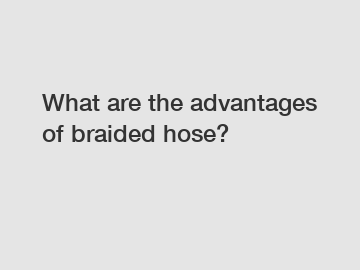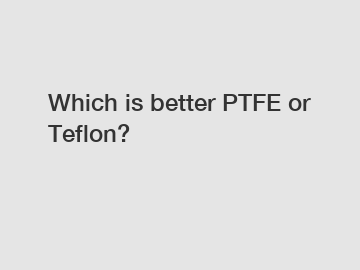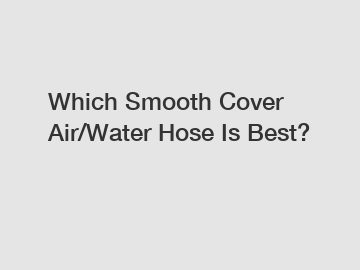Is Stretch Wrap the Same As Shrink Wrap?
Is Stretch Wrap the Same As Shrink Wrap?
Most people have heard about shrink wrap and stretch wrap before, but not everyone has a clear understanding of what they are. Both shrink wrap and stretch wrap are a kind of film made from plastic. They’re wrapped around products to secure them and protect them from potentially damaging outside elements, such as moisture or grime. This keeps the products safe during transportation and storage.
Many people assume that shrink wrap and stretch wrap are the same thing. So, is stretch wrap the same as shrink wrap? Although shrink wrap and stretch wrap look similar and serve virtually indistinguishable purposes, they’re far from identical. If you’re having trouble distinguishing these two types of protective film and aren’t completely sure which one to use to wrap your products, we’ll go over everything you need to know about shrink wrap and stretch wrap—including their differences—in this handy guide.
What To Know About Stretch Wrap
Stretch wrap (also known as Stretch film) is an elastic film used to wrap products on pallets and bind them together. It can return to its original state even after being stretched and wrapped around a pallet. There are two main types of stretch film: cast and blown. Cast stretch wrap is manufactured using the cast extrusion process, while blown stretch wrap is manufactured using the blown extrusion process. Blown stretch wrap is more resilient and versatile. However, cast stretch wrap is much less expensive to manufacture and much quieter than blown wrap. You can apply both types of stretch wrap by hand, but it’s much more efficient to wrap pallet loads using semi-automatic or automatic stretch wrapping machines.
The Advantages of Stretch Wrap
There are many advantages to using stretch wrap to secure and protect your pallet loads. These advantages include:
Low Cost
Worried about spending too much money wrapping your pallets? Luckily, stretch wrap is one of the most cost-effective materials you can use. The machines used to dispense and apply stretch wrap also tend to be less costly than other types of wrapping equipment.
Versatile
You can use stretch wrap for a wide range of applications and surfaces.
Protective
A couple of layers of stretch wrap will keep your products safe from moisture, dust, and other hazards. Specialty stretch wrap can even protect your products against UV rays.
What To Know About Shrink Wrap
Shrink wrap (also known as shrink film) is a completely transparent film customarily used to wrap and protect a single product. The film is wrapped around a product and then exposed to high heat through the use of a heat gun, heat tunnel, heat oven, or other heating device. This causes it to shrink and tighten around the product. The tight seal protects against dirt and dust, and even improves stability during shipping and storage. There are three main types of shrink film: PVC, polyolefin, and polyethylene. PVC is lightweight and useful in a variety of different applications. Its versatility has led it to become the most popular and commonly used type of shrink wrap worldwide. However, PVC is also notorious for being unsafe for both people and the environment. Polyolefin is impressively durable and, like PVC, relatively inexpensive. Polyethylene is considered remarkably strong. It is split into three main forms: low-density, linear low-density, and high-density. Each form is designed for use in different applications. As with stretch wrap, you can apply all kinds of shrink wrap by hand. However, using a case packer or shrink-wrapping machine allows for much greater speed and reliability.
The Advantages of Shrink Wrap
Just like stretch wrap, shrink wrap comes with numerous advantages. Here are some of the most notable:
Protective
Shrink wrap excels at protecting products against the elements and contaminants such as dirt and dust.
Less Surface Damage
When applied correctly, shrink wrap will protect your products from surface damage during transportation and storage.
Breathable
If you’re worried about the weather or an accidental spill ruining the integrity of your product, there’s good news—some types of shrink wrap come ventilated. This quality significantly reduces the likelihood of moisture damage.
The Differences
Is stretch wrap the same as shrink wrap? Not exactly. Many qualities set shrink wrap and stretch wrap apart, including:
Plastic Material
Both shrink wrap and stretch wrap are made from plastics—but what kind of plastics? Most stretch wraps are made from polyethylene, while the majority of shrink wrap is made from polyolefin. PVC was the primary plastic used in shrink wrap manufacturing for many years, but most companies have started to move away from it due to the harmful byproducts it releases during manufacturing. In fact, PVC is banned in many places, including Canada, Spain, and a select number of U.S. cities.
Application Process
The stretch wrap application process relies on the film’s elasticity to secure pallet loads. The shrink wrap application process, on the other hand, requires the use of a heat source to shrink the film around the product.
Usage
You’re most likely to find stretch wrap used in warehouses and distribution centers to prepare pallet loads for storage or shipment. These places typically use normal stretch wrap for most applications, but several types of specialty stretch wrap can provide products with additional protection or security. These include UV, vented, anti-static, and colored stretch wraps.
Shrink wrap is more commonly used to protect a single product or combine several smaller products, but, like stretch wrap, it can also secure pallet loads. The most common uses for shrink wrap include protecting products on store shelves, preserving food and beverages, and shielding products that are vulnerable to the elements, such as boats.
Which One Should I Choose?
Now that you understand the difference between shrink wrap and stretch wrap, you might wonder which kind you should use. To determine whether your business needs shrink wrap, stretch wrap, or both, ask yourself these questions:
Related links:The Efficiency and Environmental Benefits of Plastic Crusher Machines
PP Plastic Sheets: Revolutionizing Industries with Versatility and Sustainability
PP Tarpaulin: The Versatile and Reliable Protective Covering
Factors to Consider When Choosing Silicone Valves
What industries utilize custom seal and rubber products?
How do I choose the right bulk air hose for my application?
The Differences Between PVC and RPET Material
What kind of products do I need to package?
What kind of potential dangers will they face?
Are these products getting shipped separately or together?
Your answers to these questions should help you figure out which kind of film best suits your business’s operations.
The Difference Between Stretch and Shrink Wrap
When it comes to the protection of goods or combining of items on a pallet, these two items have very similar names. But the similarities stop there. Below we will go through the details and outline the differences of the two.
Stretch Wrapping
Stretch wrapping is simply wrapping stretchable plastic film around a load of products. This film is capable of achieving many different results depending on the users need, and we explain this in our guide to types of stretch wrap. In most cases, stretch wrap is used for transportation or storage purposes.
There are many advantages to using stretch wrap, including:
· Protection against dust and moisture – securing your loads with stretch wrap will protect them from environmental elements. UVI stretch wrap will protect your loads from UV rays when stored outside.
· Increased load stability – stretch wrap help create a more stable load, reducing chances of damage during transit.
· Increased stack height – used in conjunction with edge guards, stretch wrap helps to create a higher pallet load, maximising your cube space.
Stretch wrap can be applied in three ways. Manually, semi-automatically, and automatically. Wrapping your loads manually can be time consuming and physically demanding, sometimes causing repetitive strain injuries. That’s why at Swiftpak we recommend semi-automatic or automatic machines.
Shrink Wrapping
Shrink wrapping is when heat is applied to the covered object, and the film shrinks tightly over the item it is covering. This ensures the wrap covers every crevice of the product for maximum protection, and is used in many situations. From helicopters, to children’s toys, to candles, shrink wrap can be used to effectively wrap almost anything. The benefits don’t stop there. Shrink wrap is also environmental friendly, as it is 100% recyclable and has an LDPE (low density polyethylene) rating of 4. The glossy finish of shrink wrap is an absolute bonus too, showing off the items encased ensuring easy identification. Furthermore, shrink wrapping products means that they are completely sealed, making it an extremely safe and effective way to ship food and drink products.
The main method used when applying shrink wrap is to use a heat gun, this heats the film and makes the particles of film shift closer together, enclosing the item/s as it goes.
PCR Recycling: A Sustainable Solution for a Greener Future
Unleashing the Power of Rubber Stoppers for Pharmaceuticals: A Comprehensive Guide
Installation Guide for PVC Water Supply Pipes: Tips and Techniques
Laser Cutting Protective Film: Unveiling the Shield for Precision
The Ultimate Guide to PTFE Films: Everything You Need to Know for Superior Heat Resistance!
Top 5 Benefits of 10mm HDPE Sheet: A Comprehensive Guide
Is Polytetrafluoroethylene Sheet the Best Investment for Your Business?
201
0
0
Related Articles
-
20
0
0
-
20
0
0
-
17
0
0
-
15
0
0
-
11
0
0
-
Which Smooth Cover Air/Water Hose Is Best?
Looking for the best smooth cover air/water hose for your needs?
12
0
0







Comments
All Comments (0)